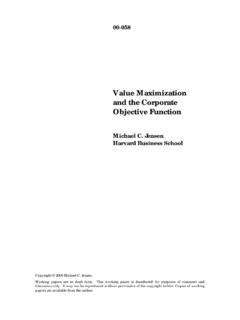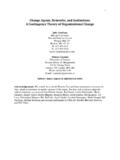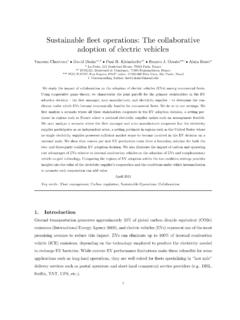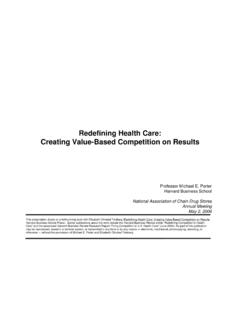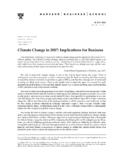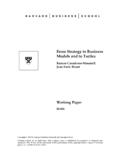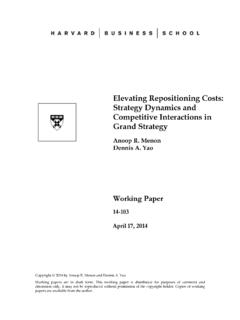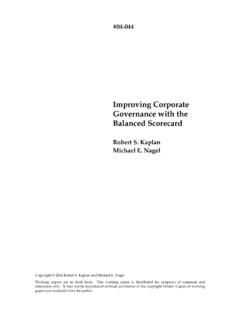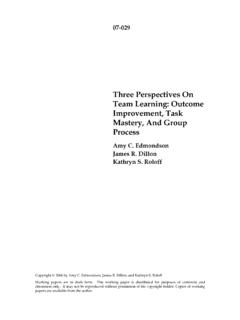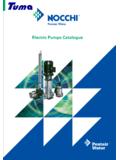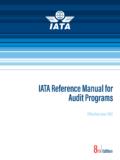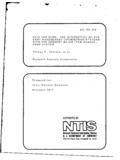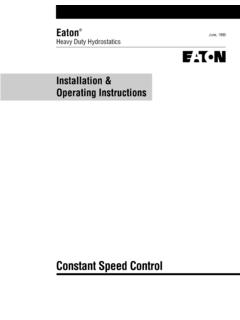Transcription of Organizational Ambidexterity: Past, Present and Future
1 Ambidexterity 1 Organizational Ambidexterity: Past, Present and Future Charles A. O Reilly III Graduate School of Business Stanford University Stanford, CA 94305 (650) 725-2110 Michael L. Tushman Harvard Business School Soldiers Field Road Boston, MA 02163 Academy of Management Perspectives (in press) May 11, 2013 Ambidexterity 2 Abstract Organizational ambidexterity refers to the ability of an organization to both explore and exploit to compete in mature technologies and markets where efficiency, control, and incremental improvement are prized and to also compete in new technologies and markets where flexibility, autonomy, and experimentation are needed. In the past 15 years there has been an explosion of interest and research on this topic. We briefly review the current state of the research, highlighting what we know and don t know about the topic. We close with a point of view on promising areas for ongoing research. Ambidexterity 3 Periodically, in scholarly research there emerges a topic that catches the interest of researchers and leads to an outpouring of studies.
2 In the study of organizations, Organizational ambidexterity appears to be one such topic. In 1996, Tushman and O Reilly proposed that Organizational ambidexterity defined as The ability to simultaneously pursue both incremental and discontinuous hosting multiple contradictory structures, processes, and cultures within the same firm (p. 24) was required for long tern firm survival. Since that time, there has been a proliferation of interest and research on the topic, including hundreds of empirical studies ( , Nosella, Cantarello & Filippini, 2012), theory papers ( , O Reilly & Tushman, 2008; Simsek, Heavey, Veiga & Souder, 2009), special issues of journals devoted to the topic (Academy of Management, August, 2006; organization Science, July-August, 2009), review articles ( , Lavie, Stettner & Tushman, 2010; Raisch & Birkinshaw, 2008, Turner, Swart & Maylor, 2013), and a large number of symposia at professional meetings. This outpouring of interest has broadened and deepened our understanding of the topic but also brought with it some confusion about the construct itself and raised issues about what we know and don t know (see also Birkinshaw and Gupta, this issue).
3 The purpose of this paper is to review and summarize the evolution of this research, identify what it is that we know with some certainty, highlight areas of confusion, and suggest where Future research is needed. The Past: Origins of the Construct One foundational insight from the study of organizations is that different Organizational forms are associated with different strategies and environmental conditions ( , Lawrence & Lorsch, 1967; Woodward, 1965). For example, in a seminal study of innovation, Burns and Stalker (1961) noted that firms operating in stable environments developed what they referred to as mechanistic management systems that were characterized by clear hierarchical relations, well-defined roles and responsibilities, and clear job descriptions. In contrast, firms operating in more turbulent environments developed more organic systems with a lack of formally defined tasks, more lateral coordination mechanisms, and less reliance on formalization and specialization.
4 Subsequent research has confirmed this insight and researchers now largely accept that different structural alignments are associated with different strategies and environments ( , Aldrich, 1999; Sine, Mitsuhashi & Kirsch, 2006; Tushman & O Reilly, 2002). Ambidexterity 4 Building on this insight, studies of Organizational adaptation have argued that for firms to succeed over long-time periods and in the face of environmental and technological change requires them to change these structural alignments ( , Schumpeter, 1934; Tushman & O Reilly, 2002). Thompson (1967) characterized this trade-off between efficiency and flexibility as a paradox of administration. In a seminal article (1991), James March noted that the fundamental adaptive challenge facing firms was the need to both exploit existing assets and capabilities and to provide for sufficient exploration to avoid being rendered irrelevant by changes in markets and technologies. In his view, exploitation was about efficiency, control, certainty and variance reduction, while exploration was about search, discovery, autonomy and innovation.
5 In March s view, The basic problem confronting an organization is to engage in sufficient exploitation to ensure its current viability and, at the same time, devote enough energy to exploration to exploration to ensure its Future viability (1991, p. 105). The difficulty in achieving this balance is that there is a bias in favor of exploitation with its greater certainty of short-term success. Exploration, by its nature, is inefficient and is associated with an unavoidable increase in the number of bad ideas. Yet, without some effort toward exploration, firms, in the face of change, are likely to fail. Based on the idea that different structures are required for exploitation and exploration, several authors suggested that for long-term survival, organizations needed to accommodate both. For instance, in the first use of the term ambidextrous , Robert Duncan (1976) argued that firms needed to shift structures to initiate and, in turn, execute innovation. After reviewing how some firms managed to survive and change over decades, Tushman and O Reilly (1996) proposed that organizations need to explore and exploit simultaneously, to be ambidextrous.
6 This observation has led to a very large number of empirical studies exploring whether ambidexterity is, as the theory suggests, associated with Organizational performance and survival, whether ambidexterity is, as originally suggested , accomplished through architecturally separate units or via other means, under what conditions ambidexterity seems most useful, and how ambidexterity is achieved (see also Tarba, Junni, Sarala, and Taras meta analysis in this issue). Its theoretical underpinnings have also been elaborated on using theories as disparate as absorptive capacity (Jansen, Van den Bosch & Volberda, 2005; Rothaermel & Alexandre, 2008), dynamic capabilities (O Reilly & Tushman, 2008; Taylor & Helfat, 2009), and Organizational learning Ambidexterity 5 (Holmqvist, 2004; Kang & Snell, 2009; McGrath, 2001). Unfortunately, as Nosella, Cantarello and Filippini (2012) point out, this proliferation of interest has also blurred some of the initial clarity about the definition of Organizational ambidexterity and diminished its potential as a capability for resolving the tensions between exploration and exploitation.
7 In the following sections, we review and summarize what these studies have found, where there seems to be ambiguity, and what areas seem most important to resolve as well as further explore. The Present : What Does the Evidence Show? Ambidexterity and Firm Performance Perhaps the most important question addressed by the empirical research is whether Organizational ambidexterity is, as the original theory suggests, associated with firm performance. Here the preponderance of evidence shows a clear pattern: ambidexterity has been shown to be positively associated with to sales growth (Auh & Menguc, 2005; Caspin-Wagner, Ellis & Tishler, 2012; Geerts, Blindenbach-Driessen & Gemmel, 2010; Han & Celly, 2008; He & Wong, 2004; Lee, Lee & Lee, 2003; Nobeoka & Cusumano, 1997; Venkatraman, et al., 2006; Zhiang, Yang & Demirkan, 2007), subjective ratings of performance (Bierly & Daly, 2007; Burton, O Reilly & Bidwell, 2012; Cao, Gedajlovic & Zhang, 2009; Gibson & Birkinshaw, 2004; Lubatkin, Simsek, Ling & Veiga, 2006; Markides & Charitou, 2004; Masini, Zollo & Wassenhove, 2004; Schulze, Heinemann & Abedin, 2008), innovation (Adler, Goldoftas & Levine, 1999; Burgers, Jansen, Van den Bosch & Volberda, 2009; Eisenhardt & Tabrizi, 1995; Katila & Ahuja, 2002; McGrath, 2001; Phene, Tallman & Almeida, 2012; Rothaermel & Alexandre, 2008; Rothaermel & Deeds, 2004; Sarkees & Hulland, 2009; Tushman, Smith, Wood, Westerman & O Reilly, 2010; Yang & Atuahene-Gima, 2007), market valuation as measured by Tobin s Q (Goosen, Bazzazian & Phelps, 2012; Uotila, Maula, Keil & Shaker, 2008; Wang & Li, 2008), and firm survival (Cottrell & Nault, 2004; Hensmans & Johnson, 2007; Hill & Birkinshaw, 2010; Laplume & Dass, 2012; Kauppila, 2010; Mitchell & Singh, 1993; Piao, 2010.)
8 Tempelaar & Van de Vrande, 2012; Yu & Khessina, 2012). These studies have documented the effects of ambidexterity at the firm, business unit, project, and individual level. Although Organizational ambidexterity may, under some conditions, be duplicative and inefficient ( , Ebben & Johnson, 2005; March, 1991; Van Looy, Martens & Backere, 2005), Ambidexterity 6 the empirical evidence suggests that under conditions of market and technological uncertainty, it typically has a positive effect on firm performance (see also Tarba et al, this issue). There are several impressive aspects to this body of research. First, in spite of using different measures of ambidexterity, a range of outcome variables, different levels of analysis, and samples from differing industries, the results linking ambidexterity to performance are robust. Second, although some of the early studies relied on case studies or anecdotal evidence ( , Markides & Charitou, 2004; Tushman & O Reilly, 1996) many of the more recent studies use large samples with longitudinal data and document the effects of ambidexterity over time.
9 For instance, the recent study by Geerts, Blindenbach-Driessen, and Gemmel (2012) looked at more than 500 firms over a 4-year period and found that ambidexterity had a positive effect on firm growth. Importantly, they also showed differences in how ambidexterity differs between manufacturing and service firms. The study by Goosen, Bazzazian, and Phelps (2012) also used a large sample (500 companies) over a 10-year period and showed that firms with greater technological capabilities benefitted more from ambidexterity. The study by Caspin-Wagner and her colleagues looked at 605 technology companies and found an inverted U-shaped relationship between ambidexterity and firm financial performance (Caspin-Wagner, et al., 2012), a finding corroborated in another large sample study by Uotila, Maula, Keil and Shaker (2008). In addition to these, other studies of the antecedents of ambidexterity have shown that it is typically more valuable under conditions of environmental uncertainty (Caspin-Wagner, et al.)
10 , 2012; Goosen, et al., 2012; Jansen, et al, 2005; Jansen, Vera & Crossan, 2009; Sidhu, Volberda & Commandeur, 2004; Siggelkow & Rivkin, 2005; Tempelaar & Van De Vrande, 2012; Uotila, et al., 2008; Wang & Li, 2008; Yang & Atuahene-Gima, 2007), with increased competitiveness (Auh & Menguc, 2005; Bierly & Daly, 2007; Caspin-Wagner, et al., 2012; Geerts, et al., 2010), when a firm has more resources ( , Cao, et al., 2009; Goosen, et al., 2012; Sidhu, et al., 2004; Tempelaar, et al., 2012), and for larger firms ( , Yu & Khessina, 2012; Zhiang, et al., 2007). In aggregate, these studies suggest three conclusions. First, ambidexterity is positively associated with firm performance. Second these effects can be contingent on the firm s environment, with ambidexterity more beneficial under conditions of uncertainty and when sufficient resources are available, which is often the case with larger rather than smaller firms. Finally, as suggested by March (1991), the evidence is that either the under- or over-use of ambidexterity comes at a cost ( , Benner & Tushman, 2002; Mitchell & Singh, 1993; Wang & Li, 2008).

